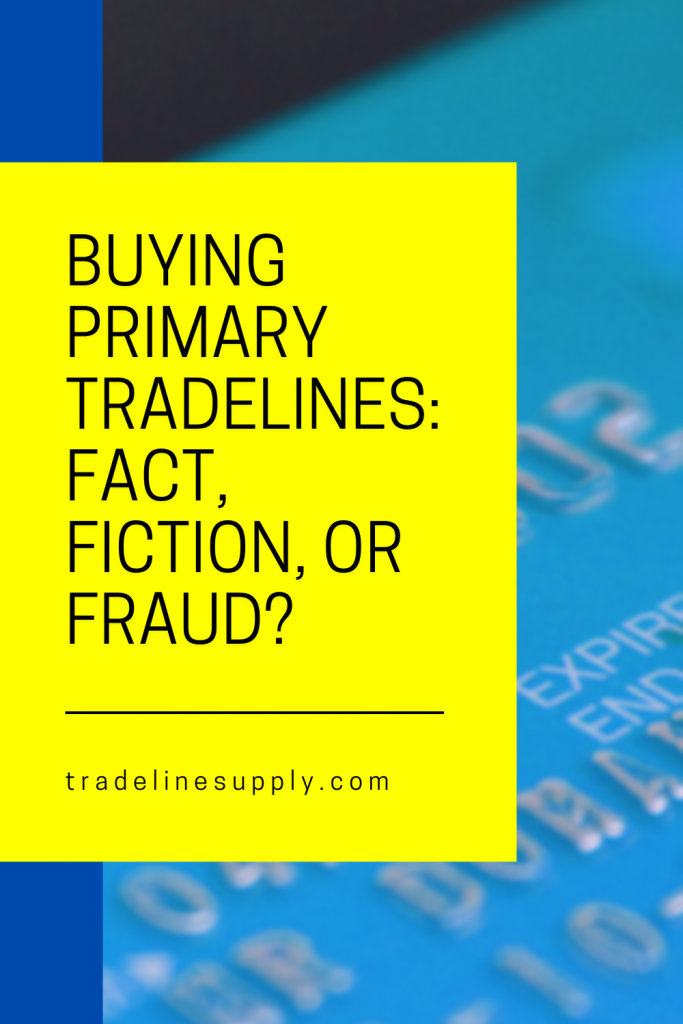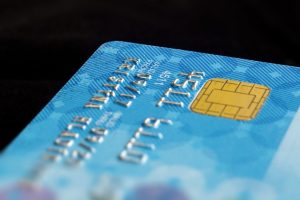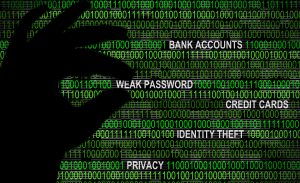Buying Primary Tradelines: Fact, Fiction, or Fraud?

Should You Open a Credit Card?
07/31/2023
How to Fix the Most Common Credit Report Errors
08/03/2023 Primary tradelines are usually the goal of anyone trying to build credit and have good credit lines available to them. Building credit with the help of another is often a great way to begin that journey to achieving strong credit options.
Primary tradelines are usually the goal of anyone trying to build credit and have good credit lines available to them. Building credit with the help of another is often a great way to begin that journey to achieving strong credit options.
However, there is a big difference between becoming an authorized user and trying to buy an actual primary account. After all, a primary account by definition is a credit line that is issued by the creditor to you as the borrower.
Therefore, if a creditor does not actually issue you credit, then acquiring a “primary account” may involve actions that are questionable at best and possibly illegal in some of the worst cases, even though they may be advertised by businesses that appear legal. Not only that, but buying primary tradelines may not even help as much as you may hope or as much as other options.
This article attempts to shed light on some of the tactics that may exist in the marketplace in regard to buying primary tradelines.
What Is a Primary Tradeline?
A primary tradeline is a credit account that is opened in your own name in which the creditor extends credit to you as the borrower. When you open up a credit card on your own, you have a primary tradeline. This means that you are responsible for the transactions that occur on this tradeline.
Mortgages, auto loans, and credit card accounts under your name are all examples of common primary tradelines. As you can see, you’re probably already familiar with primary tradelines—they’re the most common type of tradeline out there. Chances are, you already have a primary tradeline in your own name!
How to Add Primary Tradelines to Your Credit Report
The best way to add primary tradelines to your credit report is to open accounts in your own name and keep them in good standing by always paying on time and keeping the utilization low. Examples of primary tradelines you could apply for include credit cards, auto loans, home loans, or any line of credit on which you are the primary account holder. This is a foundational step in building a balanced mix of credit.

A mortgage in your name is one example of a primary tradeline on your credit report.
What Is the Difference Between Authorized User Tradelines and Primary Tradelines?
With an authorized user (AU) tradeline, you are added as an authorized user to someone else’s account, which means you are not responsible for charges made, but the account can still be added to your credit report. In contrast, you are responsible for the charges on your own primary accounts.
Since you are the one on the hook for the debt, primary accounts are often seen as a better indication of how financially responsible you really are. This is why it’s important to have some primary tradelines in your credit file as part of your foundation for good credit. It is also why some believe that primary tradelines are superior to AU tradelines.
However, AU tradelines are still very powerful tools, while buying primary tradelines is unfortunately often associated with scams and fraud.
Can I Purchase Primary Tradelines?
It is usually best to get free primary tradelines by opening them yourself rather than trying to purchase them. You can acquire primary tradelines for free by opening a credit card or another type of account.
There may be a few instances in which people can legitimately purchase primary tradelines, but probably not many. It’s just common sense. If a primary tradeline is an account opened in your name, of which you are the primary user, how could you buy one that already exists?
How would that account have been created? Someone else had to have opened that account in their name at some point. So how does it become your primary tradeline?
Buying Primary Accounts in Default
One questionable method that we have heard of is buying other people’s defaulted accounts that have gone to collections and transferring the account to a new owner. While it may sound like a clever way to acquire a primary account, if it comes with a credit history, then it also comes with a payment history.

Some sellers offer closed primary accounts.
Why would you want to acquire an account that does not have a perfect payment history? Having a negative or derogatory payment history is practically the worst possible thing to have on your credit. It usually takes years to recover from those negative marks.
On the other hand, if the defaulted primary account does not come with a payment history, then there is no seasoning to the account. As we illustrated in our article “Why Age Is the Most Important Factor of a Tradeline,” acquiring primary accounts with no payment history may not be as good as it may sound.
Purchasing Closed Accounts
We have seen examples of companies trying to sell closed primary tradelines. One problem with this option: what is a closed account really going to do for you? Perhaps it is a “primary account,” but since it is closed, that means that this account is no longer available to you (which in reality never was available to you to begin with). This does not seem like a good investment, but it is entertaining to hear how salespeople try to sell this.
When you take a step back and use common sense, you probably have better uses of your money than buying someone else’s closed account. There also may be fraudulent tactics on how they acquire these closed accounts, so buyer beware!
Paying an Annual Fee
One of the more legitimate ways to obtain a primary tradeline, if you can’t qualify for a traditional credit card or loan, is to buy products and/or pay a fee from a business that will allow you to open a line of credit with them. The business must report this line of credit to at least one of the credit bureaus in order for this to have any impact on your credit file. However, this is not exactly “buying” a primary tradeline, but rather paying a steep yearly or even monthly fee to open one and have it reported.
The problem with this strategy is that the new tradeline will not have any age since you just opened it. Opening a new account actually hurts your credit until it has had some time to age and show that you can properly manage the account.

You may end up having to buy jewelry or other products you don’t need in order to open a line of credit through a store club.
Also, the line of credit in this scenario almost always can only be used at the business that issued it to you, so you cannot use it to pay for other expenses. You may not even need anything from that business, so you might be stuck buying something you don’t want or need just to open your account.
The Joint Account Method
Some sources have said that one way to get a primary tradeline without directly opening one yourself could be to get added as a joint account holder and then remove the other joint account holder. However, many banks do not allow joint account holders to be added to existing accounts, so you would likely have to apply for a new account with the joint account holder. Sometimes they allow a joint account holder to be added, but not removed.
Many credit card issuers do not offer joint accounts at all, which leaves you with limited options. Not to mention the fact that you cannot “purchase” a joint credit account to begin with.
Plus, if you were to hypothetically open a joint credit account with someone, usually both parties have to accept the liability that the other person could damage their credit. In order to remove a joint account holder, you almost always have to just completely close that account, so then you end up with a closed account.
Another risk is what if the other person refuses to be removed and racks up debt on the account? As a joint account holder, you would still be 100% responsible for the debt, and your credit would be worse off than before.
This type of arrangement of being added as a joint account holder is valid, but we have not seen this type of business arrangement for sale, so in order to have this option you would need a close friend or family member to agree to do this for you. Even if you have a friend or family member willing to do this, you need to make sure you want to be connected to that person because if they mess up on that account, then it affects you, too.
Seasoned Primary Tradelines
As we mentioned above, in many of the most common tactics of buying and selling primary tradelines, often the “seasoned” (aged) aspect is either missing or actually has negative payments associated with the history.
Acquiring a primary tradeline with no seasoning is usually just not very valuable. Why pay money for something you can probably get for free by opening your own new account (which will also have no seasoning)?
In general, there are probably not very many legitimate shortcuts to having seasoned primary tradelines. Remember that a primary tradeline means this is your account where a creditor has issued you credit in your name. How exactly can a payment history be reported under your name if you do not have a history of paying on that account?
For the companies who have a solution to this problem, the answer is they are most likely committing fraud. If you tell a lie in the financial world, you are committing fraud. Those seasoned primary accounts were not your accounts and you do not have a payment history on those accounts, and it is not a good idea to use dishonesty to try to get around that.
Primary Tradelines for CPNs
Buying primary tradelines for a CPN number, also known as a credit profile number or credit privacy number, is also bad news. If you haven’t read our article on CPNs yet, we strongly encourage you to do so.
To summarize, official sources have made it clear that using a CPN instead of your Social Security number to apply for credit is fraud on a federal level. CPNs also often involve stealing another person’s Social Security number, which adds identity theft, another federal crime, to the mix.
The SSA has said, “Despite what many of these credit repair websites imply, consumers should know that CPNs are not legal.” Furthermore, the FTC warned, “The credit repair companies may tell you to apply for credit using the CPN or EIN, rather than your own Social Security number. And they may lie and tell you that this process is legal. But it’s a scam.”

Getting a primary tradeline is not worth committing fraud and going to federal prison.
So if you want to stay out of prison, you do not want to be associated with a CPN number in any way, let alone use one to obtain a primary tradeline.
Fraudulent Primary Tradelines
If you pay someone to report a primary tradeline to the credit bureaus in your name, who’s to say they are not just creating a fraudulent “tradeline” out of thin air? In other words, they could essentially be making up false information and reporting a tradeline to the credit bureaus that does not exist.
Again, this is a fraudulent practice that you would be liable for and something you do not want to be involved with, especially since the FBI is cracking down on those using fake primary tradelines to falsely pump up their credit.
Since this tactic does exist, if you are considering buying a primary tradeline, it is essential for you to know everything about that tradeline. Make sure you know who it belonged to originally, what the payment history is, and how exactly can you just “buy” this account and make it appear as if it is yours.
Since the reality usually is that the account does not really belong to you, in that case, you would be committing fraud. Companies that aid in committing fraud definitely exist in this market. How would you know if they are fabricating this account or if it is a legitimate account? If it is, in fact, a legitimate account, then you know you are not the legitimate owner of that account.
Are Primary Tradelines Better Than Authorized User Tradelines?
As we mentioned, people often assume that primary tradelines are “better” than authorized user tradelines because they are in your own name and indicate more financial responsibility. However, in the case of buying tradelines, that is often not the case.

Revolving accounts like credit cards are weighted more heavily in credit scores than installment loans.
According to FICO, revolving debts (e.g. credit cards) are weighted more heavily than installment debts (e.g. auto loans, mortgages). The reason for this is that while installment debt is often secured by collateral, such as your car in the case of an auto loan, revolving debt is typically unsecured, which makes it riskier for the lender. Therefore, revolving debt is a better indication of one’s credit risk, which is why it affects your credit score so much.
In addition, the credit utilization part of your credit score, which makes up 30%, only factors in revolving accounts, so adding an installment loan would not help your utilization ratio.
For that reason, it makes sense to go for revolving accounts rather than installment accounts. When you become an authorized user on a credit card, these are always going to be revolving accounts. If you really wanted to buy a primary revolving account, though, how exactly could that be done?
You might wonder if you could just pay to have someone else’s credit card account transferred to your name, but it’s not possible to do that since the lender issued the credit to the primary user and not you. When buying primary tradelines, it is probably more likely to be an installment debt such as an auto loan, which is not as impactful, and you cannot legitimately show any payment history since this was not your account.
Video: Authorized User vs. Primary Accounts
Learn more about the differences between authorized user accounts and primary accounts and how they each impact your credit in this Credit Countdown video with John Ulzheimer. Head to our YouTube channel to watch more credit videos, and don’t forget to subscribe!
Conclusions
When it comes to authorized user tradelines vs. primary tradelines, we believe it is actually better to acquire AU tradelines for several reasons.
First is the power of AU tradelines. Due to ECOA and Regulation B, the credit bureaus are forced to consider authorized user positions on credit cards, largely because the banks do not distinguish whether an AU is a spouse or not. Therefore, if the credit bureaus weigh an AU position relatively close to the primary position, then a primary position is not much more valuable than an AU position.
Second, primary tradelines for sale are usually going to be some form of an installment loan and those are not as powerful as revolving accounts, meaning an AU revolving account is more powerful than a primary installment loan.
Then there is the myriad of other reasons that make buying primary tradelines risky or less desirable. For example, primary tradelines cannot legitimately come with any payment history, so it will either appear to be not seasoned or you are probably engaging in some sort of fraud.
Legitimate revolving primaries often involve getting lines of credit at jewelry stores, for example, but the credit limits are low and there is no age to them, and age is the most important factor in a tradeline. Most of the other methods mentioned above are often associated with fraud, which of course you want to avoid.
You are trying to play the credit game, but it is important to stay within the legal lines. When considering whether you want to get a primary tradeline vs. an authorized user tradeline, there is a big difference between the two options. In the authorized user case, there is no lie. You have legitimately been added as an authorized user on that account.
On the other hand, often when buying seasoned primary accounts, you know it is not really your account. Therefore, saying the account belongs to you is fraudulent. In contrast, the authorized user account is not claimed to be primarily your account. You are simply an authorized user, which is a verifiable fact, and no laws prevent you from having the right to be an authorized user.
What’s your take on primary tradelines? If you found this article helpful, we would love for you to comment with your feedback or share it with your friends!






14 Comments
Send me update listed on tradelines that are offer now no pass or closed tradelines.
The list of tradelines on our website is updated in real-time as tradelines are sold and put back on the market. You can see the list here: https://tradelinesupply.com/pricing/
I have a credit score report of 659 with transunion and 749 with Experian. I am wondering do you have any tradelines lower than what you are offering?
All of our prices can be seen on our tradeline list. Code PKGDEAL gets you a discount on orders of multiple tradelines.
It seems you have a good enough credit score to sponsor someone in need as an authorized user.
Are these primary trade lines or AU and do they come with history.
https://tradelinesupply.com/do-you-sell-primary-tradelines/
Please add me to your tradeline list
Please add me to your tradeline list
thanks, interesting read
how long can you stay on a trade-in? does the user take you off at some point?
You stay on the tradeline for two reporting cycles (about two months). Extensions are available if you want to stay on the tradeline for more than two months.
https://tradelinesupply.com/how-long-do-tradelines-stay-on-your-credit/
https://tradelinesupply.com/do-you-have-tradelines-that-will-stay-on-my-credit-for-longer-than-2-months/
Hello.
Do you sell Primary Tradelines where the credit history remains permanent on my 3 bureaus?